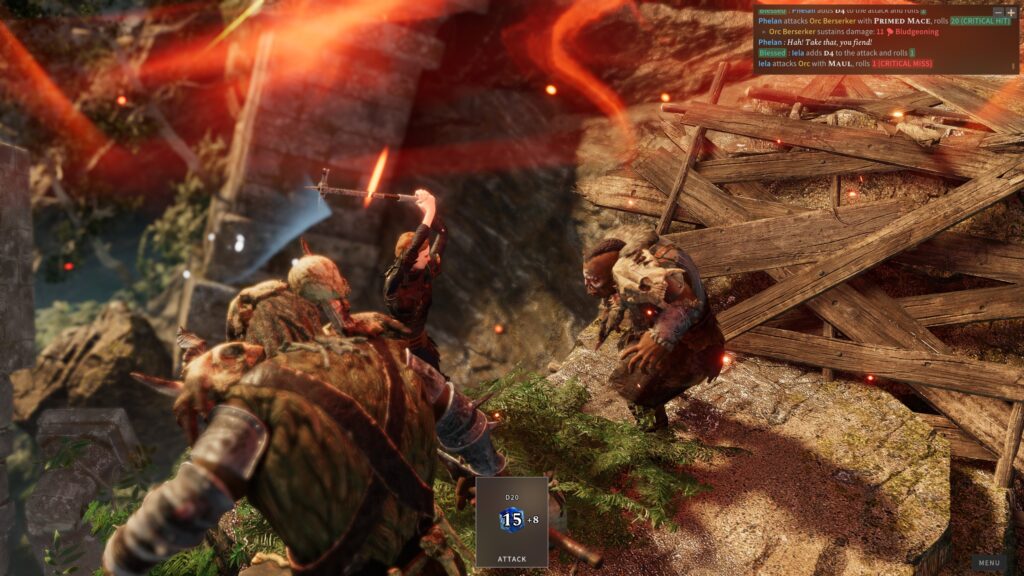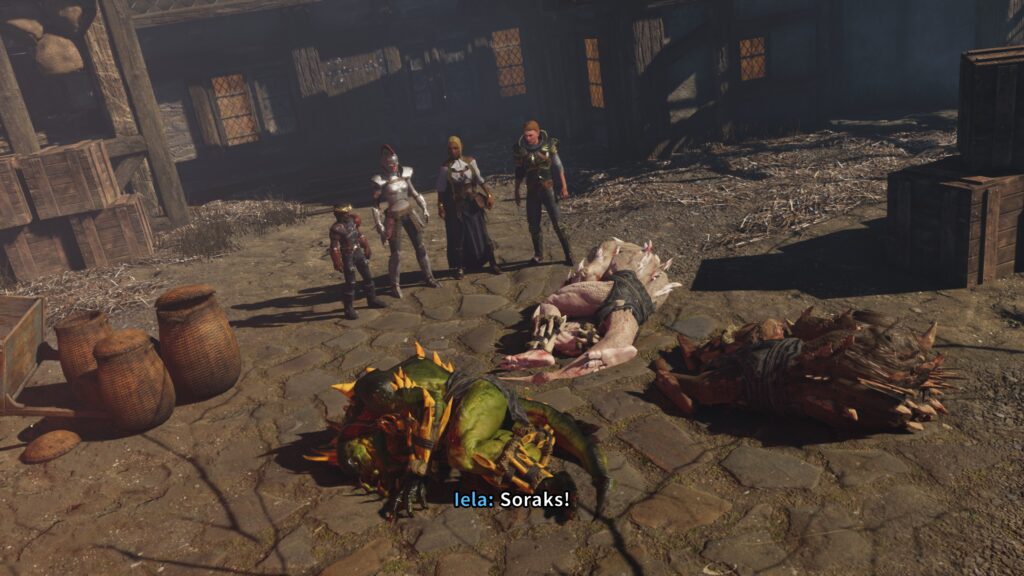
Obviously the RPG to play right is Baldur’s Gate 3 but I’m holding off on that until I get a better PC. In the meantime, there’s this little gem made by a virtually unknown company that uses the same 5th edition Dungeons & Dragons ruleset under the Open Game License. This means it uses the rules, with some modifications to adapt it for a video game, but must set it within its own original fantasy world. As a game made on a limited budget, it lacks polish and is somewhat short. Yet as many others have pointed out, its tactical depth and faithful implementation of the ruleset make it a better RPG experience than you’d expect.
The name Solasta itself refers to this fantasy world where a thousand years, a cataclysm wiped out the then dominant Elven empire. The player characters are a group of newly sworn deputies serving the Legacy Council composed of the different states and factions that arose after the cataclysm. The first mission has them being sent to an outpost that has fallen out of contact. There they discover that it was attacked by Soraks, a lizard-like species previously thought to be mythical. The cataclysm was caused when humans fleeing a world overrun by Soraks arrived on Solasta through a rift. The leaders of the Elven empire managed to close the rift at great personal cost. However the Soraks never stopped trying to cross over into Solasta and with their ability to change their shape have been infiltrating all levels of society. The adventure involves the players retrieving the powerful Crown of the ancient Elven empire, collect the gems that empower it and use it to prevent a second Sorak invasion.

The plot may be straightforward yet it’s coherent and I really like how everyone in the story acts rationally and is proactive. The main quest is completely linear and there aren’t many side quests. But it is written reasonably well so you get the impression that the Soraks are continually working against you at every turn, positioning themselves to ambush your group and even seeking the gems out ahead of you. The political situation in the Principality of Masgarth where you are based is actually really interesting as it has to balance the interests of different factions and nearby kingdoms. It makes sense that the Soraks’ primary vector of attack is to infiltrate the city to take over the identities of key people and sow dissension so that the kingdoms are unable to unite against the common threat of their return. In that regard, I’d say the main story is on par with or even better than most such RPGs from better established studios.
The graphics are on the low end side. The game looks acceptably good in the top down view but when it switches to the in-game cinematics, you can see how crude the models are. Similarly all of the user interface elements are serviceable but lack polish. Where the game truly shines is the verticality of its levels and how freely you can navigate them. Your characters can jump from platform to platform, climb up walls or crawl through tunnels. With the right spell effects, you can soar into the air, walk on walls or leap from cover to cover. It’s amazing how liberating this feels and your enemies can do the same. Enemy mages will stay in the air to rain down magic, safely out of reach of your melee bruisers. Spiders can climb on walls and attack your backline from unexpected angles. You can take advantage of the rich environment as well by shoving enemies off ledges, shooting at chandeliers so they fall down on top of enemies and so on. It’s wonderfully dynamic and given how faithfully the game differentiates between main actions and bonus actions, tactically very rich as you can often do more than one thing every turn.

The enemy AI seems strong as well. One of my most frustrating fights was against a vampiric boss. Such an enemy is vulnerable in the light so it makes sense to engage him in a place with multiple light sources. It was a sound plan, except that the enemy is smart enough to use kiting tactics, attacking and then melting away during the same turn to reappear in a spot where it is dark. I do believe it was the first time an enemy smartly tried to kite me instead of the other way around and it was such a pain to corner him. Also great is that when the enemies attack you, they tend to rush towards your group from all directions, making it difficult to catch them in area of effect attacks. Given the complexity of the levels, it’s extremely impressive how the AI is able to handle pathfinding. Getting from one spot to another sometimes involves climbing up and down different levels, jumping between platforms and so on. Sometimes I can’t even be sure myself how to get from one place to another at a glance. The AI is so good at it that it makes you wonder why some RPGs are so bad at it when they only have flat maps.
This constitutes my first exposure to the 5th edition ruleset. It’s meant to be simpler, to streamline the mechanics for in-person play and to lower the power scales. This certainly seems to be the case as there are fewer options overall in character development, the power of magical items seems more constrained and there are no longer a bafflingly huge range of stacking bonuses for attack and defense. It’s much easier to make sense of even though this system is all new to me and it’s satisfying to experience this back to basics RPG experience without having to deal with too many exotic elements. As this is a shorter game, the reduced scope works very well. I do wonder if it’ll continue to be as satisfying for campaigns that are meant to be longer and larger in scope. There’s certainly no possibility for the equivalent of epic levels under this ruleset.

Great as this game is, it can’t compare to the feeling of playing a big budget RPG. There’s very limited dialogue, the world feels small, and the lack of polish feels grating after a while. I was annoyed by small quality of life issues like how selling prices seem to differ by vendor, realizing that in order to obtain the really good magical items you need to craft them yourself and being frustrated by the tediousness of navigating between the many crafting recipes being sold by different factions. The maps are great but not perfect. Theoretically you should be able to get anywhere by flying but sometimes you can’t. There are places that you can only jump to and not fly to, strangely enough. Last but not least, the four character limit really restricts the party compositions that are possible. I’m really curious how Baldur’s Gate 3 handles this ruleset and playing this only makes me more eager to play that bigger game.
I’m going to buy the DLCs in due course simply because I want to reward the developers Tactical Adventures for making this. I can’t recommend this highly enough to all RPG fans. After so many years of a tactical RPG drought, it looks like a new golden age truly is upon us.